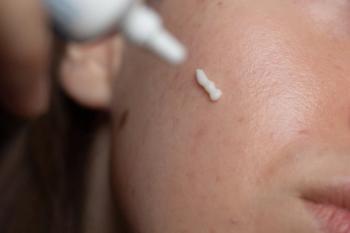
Update: FDA Extends Review of Ruxolitinib Cream for Pediatric AD
Key Takeaways
- The FDA extended the review period for ruxolitinib cream's sNDA to September 19, 2025, for additional data review.
- The TRuE-AD3 study showed significant efficacy in pediatric patients, with improved IGA-TS and EASI 75 scores.
The new PDUFA date is set for September 2025.
The
According to Incyte’s announcement, the FDA extended the PDUFA date to allow for review of additional chemistry, manufacturing, and controls data of the 0.75% formulation in response to a recent FDA information request.
“[AD] is a chronic immune-mediated skin condition that can be difficult to manage, particularly for the millions of children in the US affected by AD,” Steven Stein, MD, chief medical officer of Incyte, said in the announcement. “We are confident in the potential of ruxolitinib cream to become an important nonsteroidal, topical treatment option for pediatric patients with [AD], and we will continue to work closely with the FDA to ensure the agency has all the information needed to complete its review.”
The approval of ruxolitinib cream, a JAK1/2 inhibitor, for pediatric patients was expected earlier this week. The sNDA submission was based on data from the phase 3 TRuE-AD3 study (
The TRuE-AD3 study met its primary end point, with significantly more patients treated with ruxolitinib achieving Investigator Global Assessment treatment success (IGA-TS) than patients treated with a vehicle cream. The study also met one of its secondary end points of patients demonstrating at least a 75% improvement in the Eczema Area and Severity Index at week 8.1
In the expanded TRuE-AD3 data, significantly more patients treated with ruxolitinib 0.75% and 1.5% achieved IGA-TS compared with patients receiving a vehicle control cream. Additionally, more than half (54%) of patients achieved an IGA score of 0 or 1, demonstrating complete or near complete clearance. Nearly 3 of 4 patients (73%) achieved at least a 4-point improvement in Itch Numerical Rating Scale scores by as early as week 4.2
The safety profile of ruxolitinib in the TRuE-AD3 study was consistent with previously reported data among pediatric patients, and no new safety signals were observed. No serious infections, major adverse cardiovascular events, malignancies, or thromboses were reported during the 8-week vehicle-controlled period. Application site pain was the most common treatment-related adverse event, with 2.7% among patients treated with ruxolitinib and 0% among patients treated with vehicle cream. These treatment-related events were mild and did not affect treatment duration or discontinuation.1
References
- Update on FDA review of ruxolitinib cream (Opzelura) for children ages 2-11 with atopic dermatitis. News release. Incyte. June 20, 2025. Accessed June 20, 2025.
https://investor.incyte.com/news-releases/news-release-details/update-fda-review-ruxolitinib-cream-opzelurar-children-ages-2-11 - Incyte announces new data for ruxolitinib cream (Opzelura) in children with atopic dermatitis. Incyte. October 13, 2023. Accessed June 20, 2025.
https://investor.incyte.com/news-releases/news-release-details/incyte-announces-new-data-ruxolitinib-cream-opzelurar-children
Newsletter
Like what you’re reading? Subscribe to Dermatology Times for weekly updates on therapies, innovations, and real-world practice tips.


















